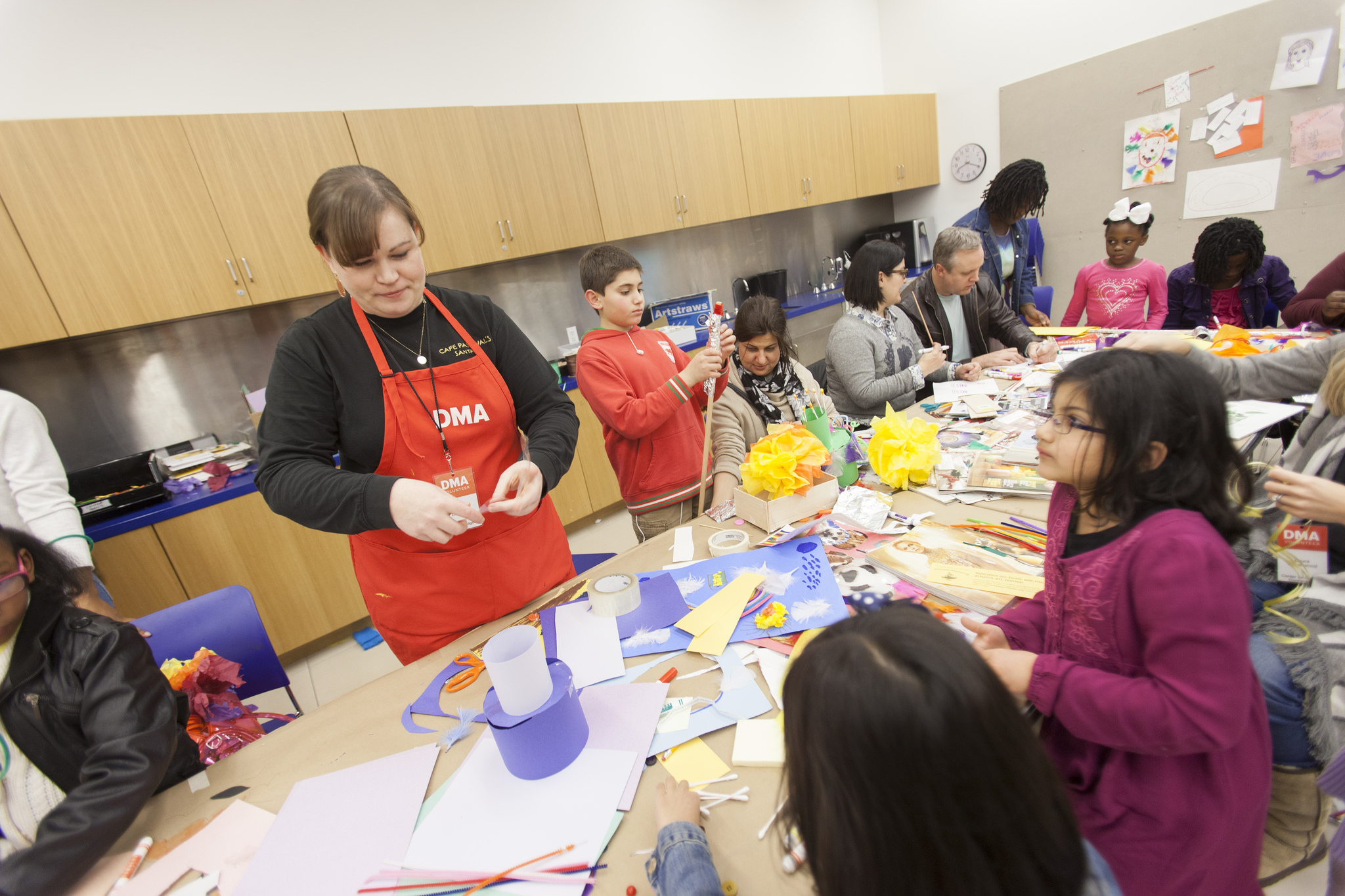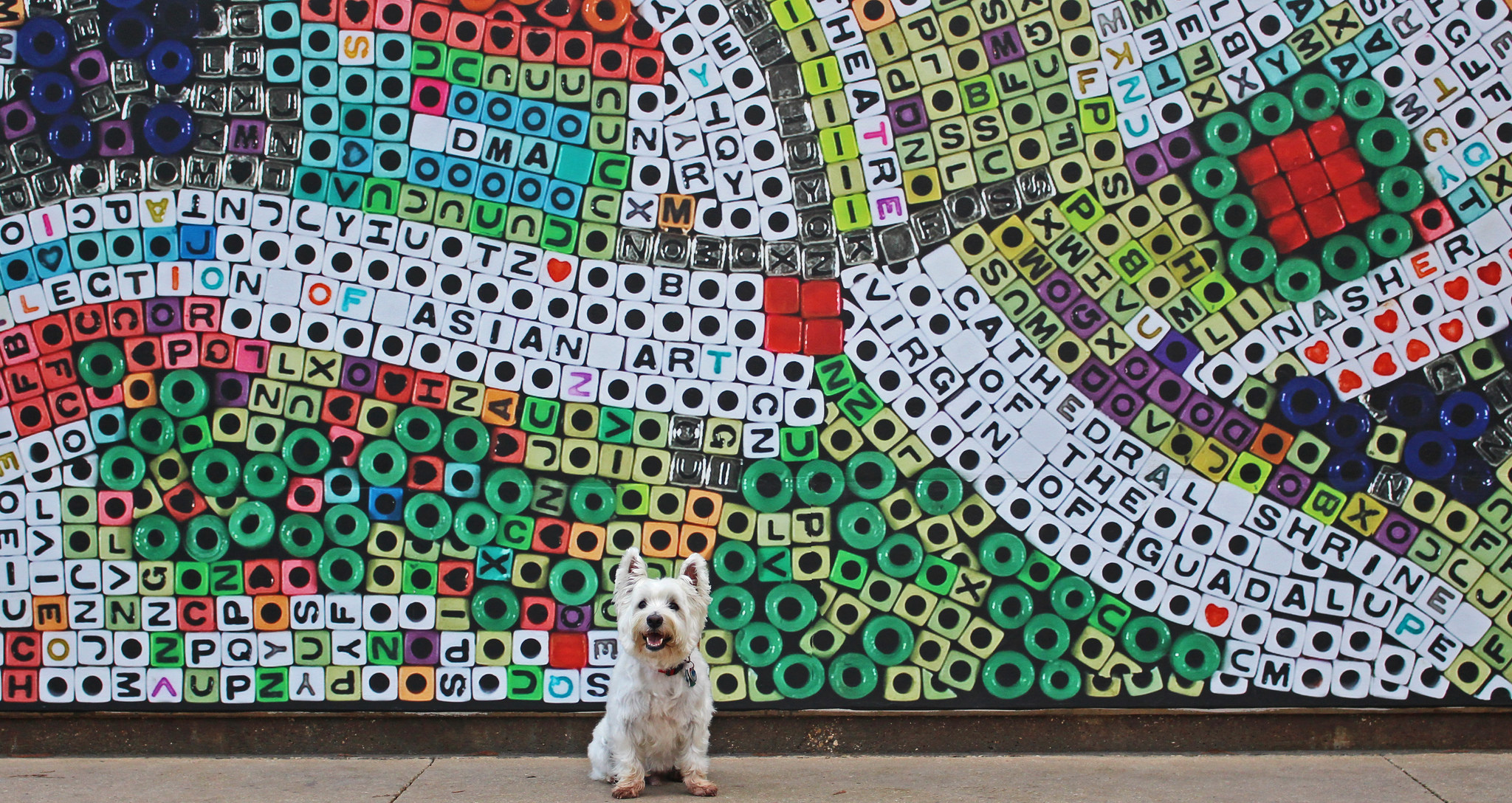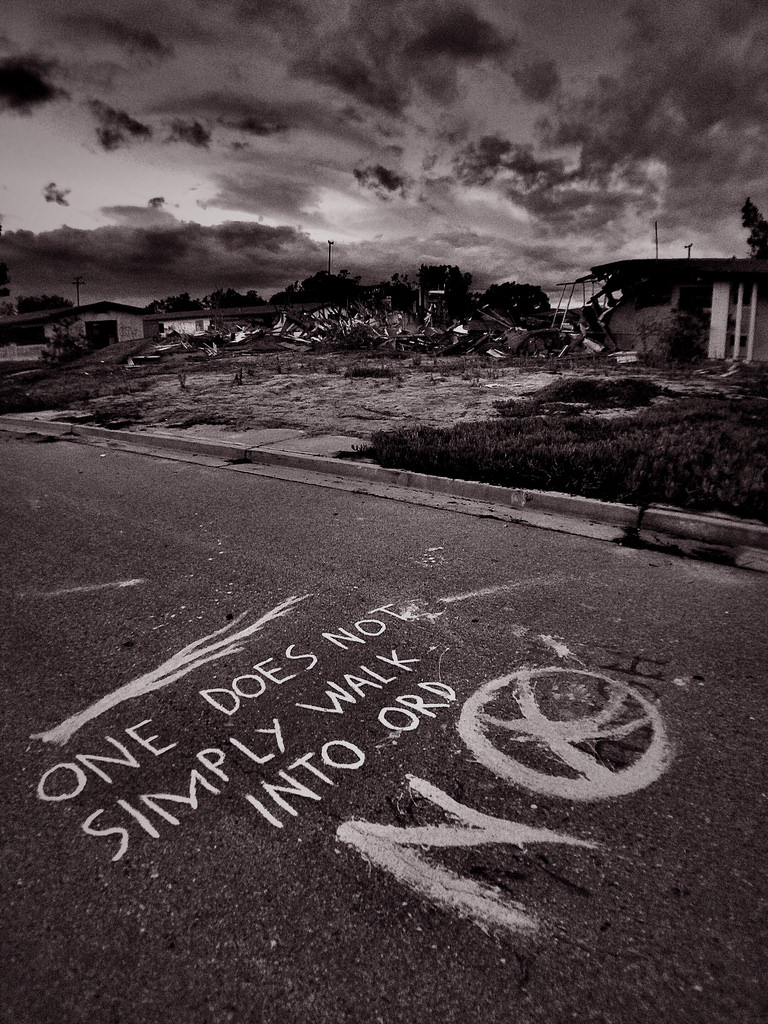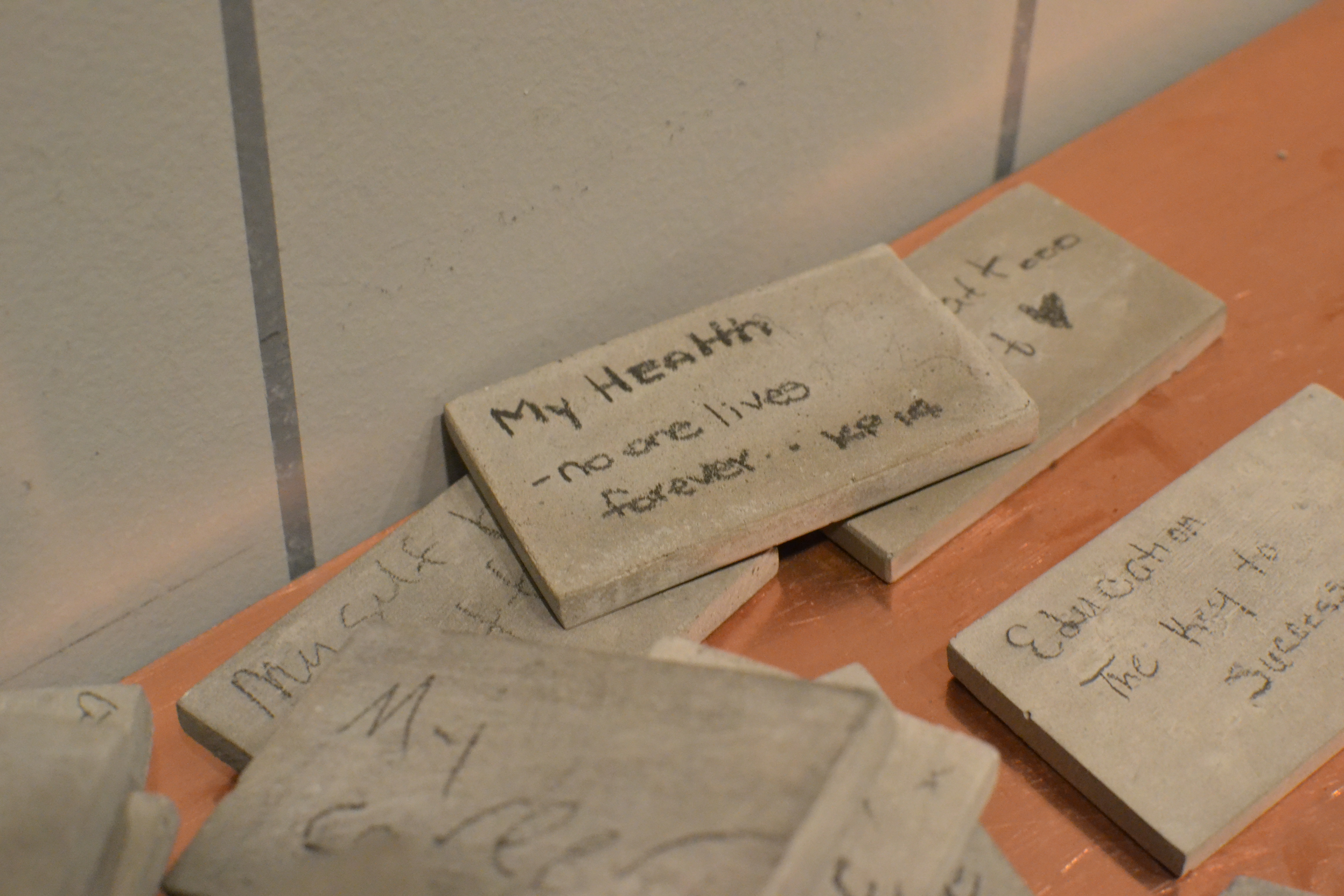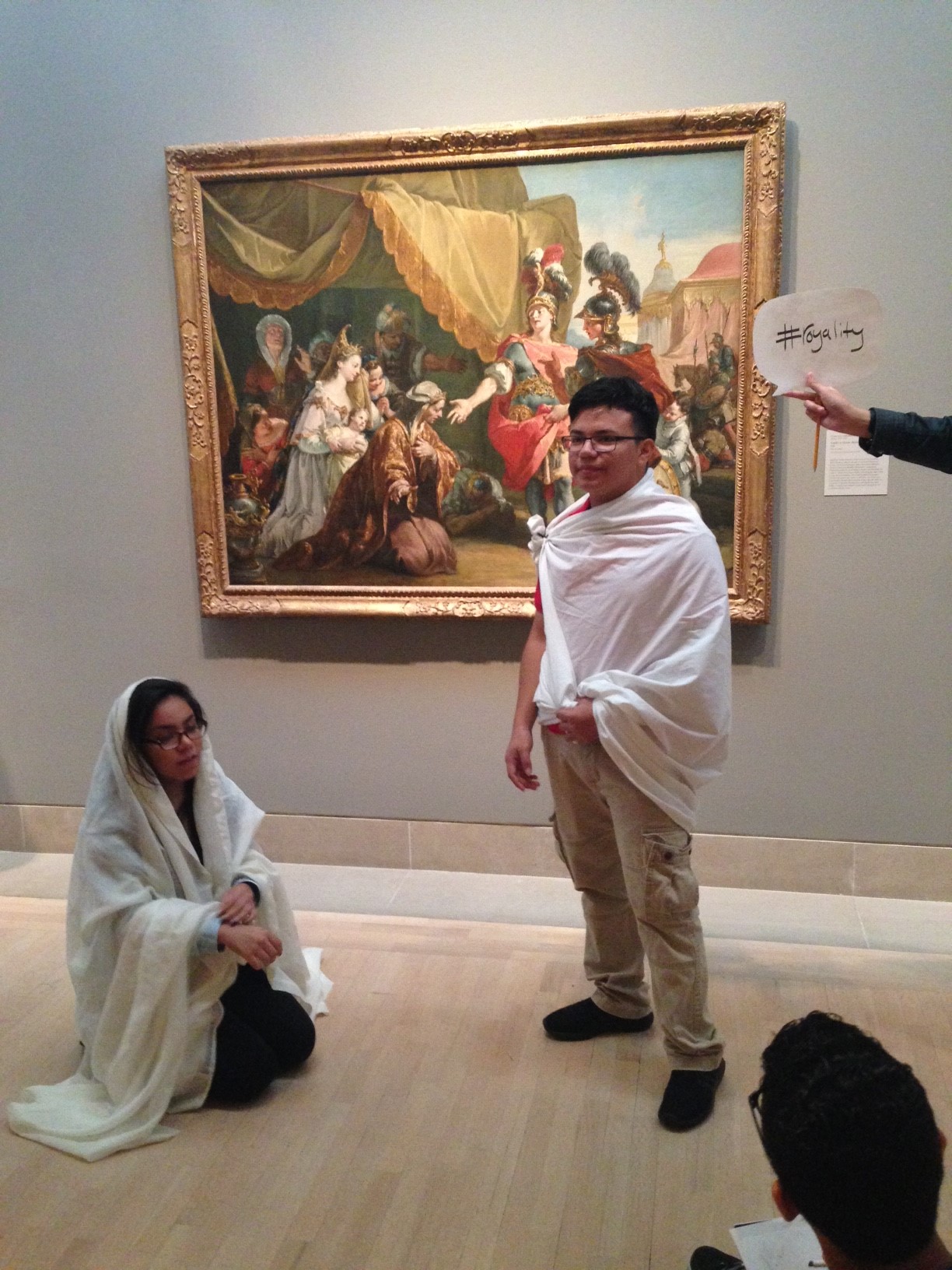“Every child is an artist. The problem is how to remain an artist once we grow up.” – Pablo Picasso

The Center for Creative Connections (C3) is unique because we focus on learning by doing. That means we design activities for people of all ages to learn about works of art from the collection by participating in a hands-on way. The activities we create to accompany works of art prompt visitors to engage in ways that are different from the standard didactic approach of a wall label. In C3, we want to provide experiences where visitors can make personal connections by drawing, writing, making, and discussing works of art with each other.
This kind of active engagement carries a certain stigma; many people assume that it’s only for kids, mainly because we are used to seeing activities like these in children’s museums. Part of our design process is to evaluate visitors’ experiences by observation, interviewing and counting. We’ve learned that half of our participants are adults and that there is a reoccurring theme in their comments regarding why they participate. So, why do adults flock to C3 to draw, write, make, and talk about art? Because it connects them to a childlike curiosity and creativity which, as an adult, often takes a backseat to other responsibilities and tasks.

In January 2014, we installed a large table in the middle of the C3 Gallery, that hosts three activities that rotate on a monthly basis. As a part of the evaluation of these activities, we interviewed visitors about their motivations for participating, their past experience with art making, and their view of the value derived from participating in a making activity at the Museum. I was repeatedly intrigued by the responses of the adult participants.
For example, I spoke with a couple participating in a portrait drawing activity which encouraged close looking at the proportions and scale of the human face. The couple, in their mid-thirties, each claimed to have no artistic experience. Through our conversation, they divulged that they both graduated from arts based college programs. “I went for fashion, like a BFA in Design, and he went for Graphic Design. We don’t really draw in our free-time though, I mean, he does for work,” the woman stated as she looked over at the man who accompanied her. He added, “Yeah, but just on the computer.” Then the woman broke in, “And I do for work, but it’s not the same. Like, I do fashion sketches, not this kind of drawing.” I prodded them a bit to understand what “this kind of drawing,” meant. “Well, it’s like… it’s fun. Like drawing before was so serious and it had to be perfect, cause you were doing it for a grade. But this is just for enjoyment.”
This idea was reinforced by further conversations with other adult participants: drawing, making, and discussing in C3 is fun in a freeing kind of way. I interviewed another thirty-something couple drawing at a light box activity designed to assist in the making of hybrid imagery. The man began with, “I’m guessing this was made for children? It’s fun and different and I didn’t expect to see this here.” The woman with him agreed, “Yeah, it’s like that spark of creativity, kind of… childlike. I didn’t think I’d spend as much time or get into it like I did.” A sixty-something man participating in the portrait drawing activity remarked, “I used to take art classes, but it’s been so long ago… it’s like I forgot that and I saw this and I remembered.” This feeling of nostalgia for something that is no longer a part of someone’s everyday life was also a common response from adults. Many adults responded that they enjoy drawing or making but, “don’t do it enough.”
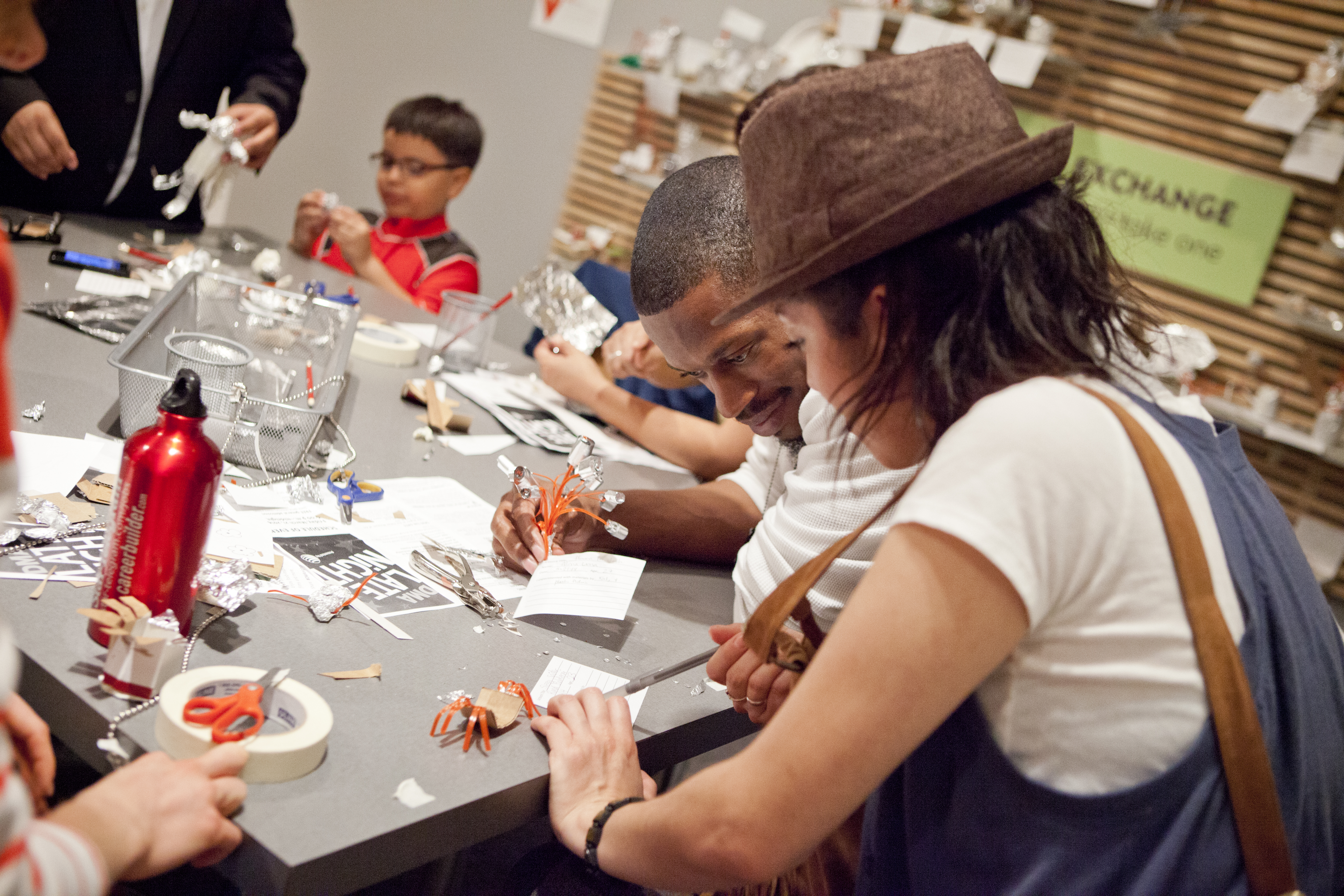
Aside from drawing based activities, the Center for Creative Connections also has a drop-in art making area with large communal tables called the Art Spot, which we say is the place for “anytime art-making for everyone.” We invite visitors to explore their creativity by making creations out of unexpected or everyday materials. Every two months we change the materials and provide a prompt to inspire ideas. Each time I’m hesitant and wonder, “What will people make with this?” But, I am always delighted and surprised by the imaginative creations that are made and left behind. Children often come to C3 and head straight for the Art Spot, while adults can be a bit more tentative. However, regardless of age, most visitors stay anywhere from 5 minutes to two hours, with an average of about 20 minutes. Once they gather their materials they become immersed in their creation. For some it is a hands-on problem solving activity while for others it is about manipulating materials. How can you combine these objects (cups, spoons, paperclips, wire, egg cartons, cardboard, etc.) into something unique and surprising? This kind of open-ended activity, reminiscent of childhood playing and pretending, is not often made available to adults. I frequently watch my eight-year-old daughter take something like a toilet paper roll and turn it into a piano for her dollhouse, or repurpose a cardboard box to make an enormous rocket ship. This nostalgia for childhood play was brought perfectly into perspective by a recent Art Spot creation.

At the DMA, learning can take many approaches and forms. We strive to be inclusive so that we can reach visitors with a multitude of interests and experiences and preferences for learning. In the Center for Creative Connections, our mission is to engage visitors of all ages with works of art and the creative process of artists. We hope that by designing participatory ways to learn we will provide fun and playful activities for all of our visitors, regardless of their age.
Jessica Fuentes
C3 Gallery Coordinator
















